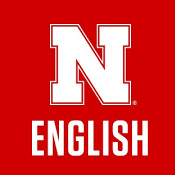English, Department of

Department of English: Faculty Publications
Document Type
Article
Date of this Version
2012
Citation
Artifacts and Illuminations: Critical Essays on Loren Eisley, edited by Tom Lynch and Susan N. Maher. Lincoln: University of Nebraska Press, 2012, pages 123–142
Abstract
Loren Eiseley's literary reputation today rests almost exclusively on the significance of his nonfiction nature essays, which deservedly stand as influential exemplars of creative nonfiction science and nature writing. However, in his early years as an undergraduate at the University of Nebraska, Eiseley had the reputation as an important and promising poet, and he published poetry in a range of literary journals. Most notably, his work appeared in the earliest editions of Prairie Schooner, whose editorial staff he joined in 1927, the year after it began publication. And, not limited to his own school's journal, he a variety of other venues, even in Harriet Monroe's prestigious Poetry magazine. As a young man, Eiseley was immersed in the lively poetry world of the 1920S and 1930S and poised to become an important voice in that world. In particular, he was an enthusiastic champion of Robinson Jeffer's controversial inhumanistic poetry. Eiseley admired Jeffers "above all modern writers because of their common heritage - 'the poet and the scientist in one'" (Christianson, Fox 191).
Eiseley's education exemplified this mix of poet and scientist; he received dual bachelor's degrees in English and anthropology. But for a variety of reasons, English lost out, and Eiseley chose to pursue graduate studies in anthropology. In spite of the promising start to his career as a poet, his poetic publications diminished precipitously after he took his first teaching job in 1937 at the University of Kansas. By 1945 he had ceased altogether to publish poetry. Alas, he would seem to have become that all too familiar, pitiful spectacle, the promising poet nipped in blossoming bud by the cold shears of economic necessity. It seems likely that to have continued to publish poetry while simultaneously pursuing a career in science would have been not only a distraction but likely a hindrance to professional advancement, for who would take him seriously as a scientist ifhe were also publishing, of all things, poetry. And later, at the University of Pennsylvania during the 1950S and 1960s, even as his reputation as a popular writer of science and nature essays grew, he nevertheless continued to refrain from poetry - from publishing it, that is, but not, it would seem, from writing it.
Ever the furtive fox, Eiseley had continued to scribble poems through these years among the data and scientific trivia accumulating in his notebooks, while outwardly conforming to the sober and responsible demeanor of a scientist, interchanging, as he says, "an artifact for a poem or a poem for an artifact" (Notes 11). In his later years, as his academic career drew to a close and being known as a publishing poet could no longer injure his professional reputation, Eiseley released in quick succession three volumes of poetry: Notes of an Alchemist in 1972, The Innocent Assassins in 1973, and Another Kind of Autumn, posthumously 1977.
In general, Eiseley scholars have tended to overlook his poetry. At best, they have seen his youthful poetry as a formative apprenticeship, laying the foundation for his real work, the crafting of his nonfiction prose essays. That his prose essays are so often praised for their poetic qualities has not seemed to suggest that his poetry itself might deserve a closer look. Poetry scholars have likewise overlooked Eiseley's poetry. At the time of the publication of his poetry books in the mid-1970S, poetry criticism was ill-suited to assessing and appreciating Eiseley's poetic output. Neither the lingering New Criticism nor the emerging postmodern hermeneutics of skepticism had much sympathy for Eiseley's earnest engagement with serious questions regarding a world that lay very much outside the text.


Comments
Copyright 2012 Board of Regents of the University of Nebraska.